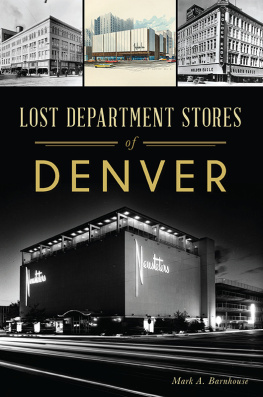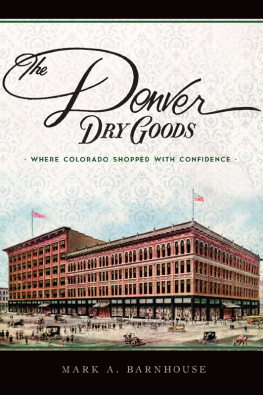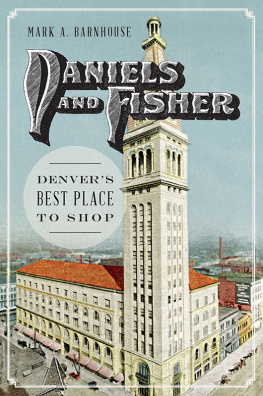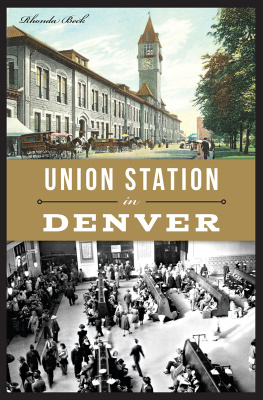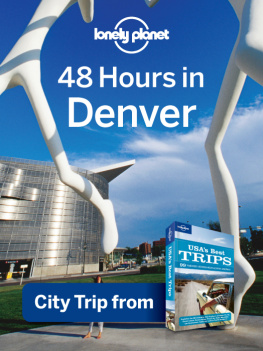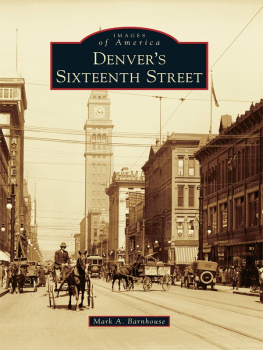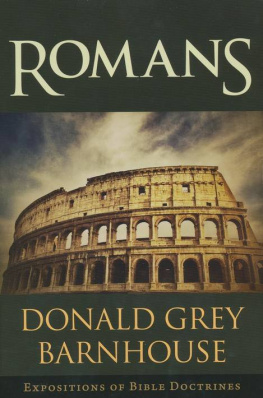Published by The History Press
Charleston, SC
www.historypress.com
Copyright 2021 by Mark A. Barnhouse
All rights reserved
First published 2021
E-Book year 2021
ISBN 978.1.4396.7394.2
Library of Congress Control Number: 2021943425
Print Edition ISBN 978.1.4671.4840.5
Notice: The information in this book is true and complete to the best of our knowledge. It is offered without guarantee on the part of the author or The History Press. The author and The History Press disclaim all liability in connection with the use of this book.
All rights reserved. No part of this book may be reproduced or transmitted in any form whatsoever without prior written permission from the publisher except in the case of brief quotations embodied in critical articles and reviews.
PREFACE
Buildings break your heart, especially when you invest them with your ideas and your identityespecially when you make them symbols not just of who you are but of who you are supposed to be.
Tom Junod
Those words are about a particular building after a particular event, but they are just as applicable to Denvers vanished landmarks. The buildings in this bookhotels, houses, office buildings, even sanitariawere each invested with meaning by their builders and inhabitants, not to mention the many Denverites who encountered them every day until suddenly they were gone. Some buildings everyone knew, probably entering them many times over their lives, while others were private, even obscure.
My interest in an older Denver started at an early age. My mother loved the vast mansions built by nineteenth- and early twentieth-century magnates that once ran uninterruptedly down Sherman, Grant and Logan Streets. She remembered how, when she first arrived as a teenager in 1938, she could walk under a shade canopy from her house in Congress Park all the way downtown where she had a job making candy. She moved from one house to another, her builder father converting old Denver Squares into apartments or rooming houses. She inherited her love of old buildings from him, Lester Frederick Smith, whose name comes up later in this book. Growing up in the 1970s, I heard her frequent plaint, They might just as well tear down everything, theyve destroyed so much already. Christmas gifts of photograph-filled books further stimulated my interest: Sandra Dallass Yesterdays Denver, and Denver: A Pictorial History by William C. Jones and Kenton Forrest. The garage sale discovery of a 1959 Denver Post rotogravure supplement, This Is Colorado, published to commemorate Rush to the Rockies, the Pikes Peak Gold Rushs centennial, continued my fascination with a Denver I never knew. The results of these sojourns are the several books I have published with Arcadia Publishing and The History Press.
Signage announcing the property owners request to have The Hut at 1980 Albion Street declared Non-Historic, a precursor to demolition. Courtesy Angel Johnson and Erik Stark.
Choosing landmarks for this book was not easy. I had previously published Lost Denver, covering over one hundred old buildings. Others have also published books on the theme. I decided that rather than try to rehash what historians have done before, I would seek out some less well-known oneswhich is not to say that this book lacks all of the old warhorses. The selection is eclectic rather than comprehensive, and during the research and writing, I became fascinated with each one as I discovered things about them I had not known before.
Just prior to this books completion, History Colorado announced it had digitized the two volumes of its 1920s Denver Ku Klux Klan ledgers, making them available on its website (
Many people have helped me write this book. First, Amy Zimmer: I asked her if there were buildings she was unable to cover in her Lost Denver due to space constraints, and she sent me a long list. As a former member of the Denver Landmarks Preservation Commission, she also suggested highlighting more recent losses demolished by uncaring developers during Denvers twenty-first-century boom. Researching a book during a pandemic when libraries were closed proved no easy matter; Judy Stalnakers recommendation of GenealogyBank.coms newspaper archives proved invaluable. Also deserving of many thanks for their help, advice and inspiration are Shaun Boyd, Katie Bush, Artie Crisp, Kellen Cutsforth, Ray Defa, Bob DeWitt, Roger Dudley, Debra Faulkner, Angel Johnson, Jori Johnson, Susan Keats, Leslie Mohr Krupa, Shari Myers, Dr. Thomas J. Noel, Mary ONeil, Heather Ormsby, Hilary Parrish, the late Carl Sandberg, Laurie Simmons, Tom Simmons, Erik Stark and, as always, Matt Wallington.
INTRODUCTION
Historic preservation in Denver took off later than elsewhere. The concept dates to the 1850sthe decade of Denvers foundingwhen Virginian women worked to protect George Washingtons Mount Vernon. Recognizing the importance of their city to the American story, in 1931, Charleston, South Carolina residents established Americas first designated historic district. In 1935, President Franklin Roosevelt signed the Historic Sites Act, which led to the Historic American Buildings Survey, originally providing work to unemployed architects and other professionals during the Great Depression; it continues today under the National Park Service. In 1949, President Harry Truman signed legislation creating the National Trust for Historic Preservation, and in 1966, President Lyndon Johnson approved the National Historic Preservation Act, which created the National Register of Historic Places.
What was Denver doing during that time, when most white Americans believed in an unlimited future defined by material prosperity? While some appreciated historic buildings and neighborhoods and bemoaned the loss of every landmark that came down, they were in the minority. After World War II, following two decades when very little changed, Denvers business and political leaders, following the lead of out-of-town developers like New Yorks William Zeckendorf and Dallass Murchison brothers, came to view their city as frumpy and old-fashioned, inhibiting Denver from competing with other cities to attract new business and residents. They decided to remake downtown, the main workplace for white suburbanites, who would arrive by automobile via wide new freeways. Old Capitol Hill mansions, built to lavish standards for an elite class that had moved on, had been converted to apartments, offices and even music schoolsthese, leaders hoped, would give way to luxury apartment towers. Most new structures that replaced them were mediocre (true now as well), and many treasures came down just for parking. Beautiful nineteenth-century schools, churches and houses were antithetical to this postwar vision. Advocates of progress lacked the imagination to understand that the precious old could peacefully coexist alongside the gleaming new, and even enhance it.
In 1958, the city established DURA, the Denver Urban Renewal Authority, initially focused on residential areas. Slum clearance was widespread nationally, the idea that decaying cities could be healed through wholesale demolition of blight. The three quotation-marked words in the previous sentence were based on false ideas of what ailed cities. Residents, usually people of color, did not consider their neighborhoods, long red-lined by banks, blighted slums, and if any healing was to be done, it would have been better accomplished through community building than with bulldozers. Planners exacerbated, rather than healed, Denvers economic and racial divides. In the 1960s and 1970s, DURA turned its attention to downtown and the downtown-adjacent Auraria neighborhood, the citys oldest. Its Skyline Urban Renewal Project demolished all or part of a seventeen-block area of what was then called lower downtown, roughly Speer Boulevard to 20th Street, Curtis Street to the alley between Larimer and Market Streets. Across Cherry Creek, DURA razed nearly everything between Speer Boulevard, Colfax Avenue and Wazee Street (now Auraria Parkway) for a three-institution campus; displaced residents were promised free college educations. DURA has since embraced historic preservation as a tool and has become better at respecting Denvers non-Anglo communities, but in its early decades, DURA served as an apparatus for Denvers moneyed interests to remake the city using since-disproven clean slate theories.






